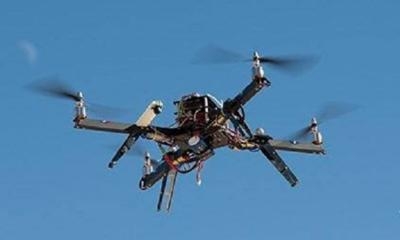Tue, Jun 14, 2016
Number Decrease Even As Drone Sales Continue To Climb
The Academy of Model Aeronautics (AMA) has released an updated analysis of the FAA’s drone data which finds a month-by-month decline in UAS sightings since peaking in August 2015. The apparent decrease in monthly sightings is remarkable as it comes despite an influx of nearly 700,000 to one million new devices sold last year. Meanwhile, consistent with AMA’s prior findings, only 3.3 percent of reports in the FAA’s latest dataset contained explicit notations indicating near misses or close calls.

“We’re glad to see a decline in UAS sightings as more people are learning how to fly responsibly,” said Dave Mathewson, executive director of AMA. “Education-focused campaigns like ‘Know Before You Fly’ are clearly paying off. Every day more and more people are getting the information they need to stay safe.”
AMA’s updated analysis reviews the 582 drone sightings released by the FAA on March 25, 2016 (“March 2016 data”). This analysis also looks at trends in the March 2016 data and the previously released August 2015 UAS sightings, which were the subject of an earlier AMA report released on September 14, 2015.
AMA is a founding member of “Know Before You Fly” (KBYF), which was created in 2014 to educate newcomers to drone technology about the safety aspects of flying unmanned aircraft and where they should and shouldn’t fly. Since its inception, www.knowbeforeyoufly.org has received almost half a million unique visitors – 81 percent of which are first time visitors. In total, the website has had over 1.2 million page views since the campaign’s launch. AMA and the KBYF campaign continue to work with manufacturers, distributors and retailers of UAS technology to include basic safety information in product packaging and at the point of sale.
Among the findings in AMA’s updated analysis:
- In keeping with AMA’s previous analysis, the number of near misses and close calls in the March 2016 data is very small – just 3.3 percent. The vast majority of the reports are sightings, which even the FAA’s language acknowledges.
- Notwithstanding estimates that as many as one million drones were sold during the 2015 holiday season, the number of sightings has not increased as one might expect. In fact, despite a dramatic increase in the number of small unmanned aircraft in the U.S. the number of reported sightings appears to be declining after peaking in August 2015.
- In line with what AMA found in the August 2015 data, many of the sightings may involve people flying responsibly and within the FAA’s current guidelines. In the March 2016 data, AMA identified 38 sightings in which drones were reported to be flying at or below 400 feet.
- Like the August 2015 data, the March 2016 data contains reports of several objects other than drones, including balloons, birds, a rocket and even a jet pack. The FAA’s drone data continues to be a “catch all” for any object spotted in the sky.
Despite the FAA’s intent to find and punish careless and reckless operators, law enforcement notifications appear to be on the decline. In the August 2015 data, nearly 20 percent of reports were not referred to local law enforcement or law enforcement notification was unknown. In the March 2016 data the number of sightings not referred to law enforcement is up to 29 percent.
(Image from file. Source: Academy of Model Aeronautics news release)
More News
He Attempted To Restart The Engine Three Times. On The Third Restart Attempt, He Noticed That Flames Were Coming Out From The Right Wing Near The Fuel Cap Analysis: The pilot repor>[...]
Make Sure You NEVER Miss A New Story From Aero-News Network Do you ever feel like you never see posts from a certain person or page on Facebook or Instagram? Here’s how you c>[...]
From 2009 (YouTube Edition): Leading Air Show Performers Give Their Best Advice for Newcomers On December 6th through December 9th, the Paris Las Vegas Hotel hosted over 1,500 air >[...]
Aero Linx: NASA ASRS ASRS captures confidential reports, analyzes the resulting aviation safety data, and disseminates vital information to the aviation community. The ASRS is an i>[...]
“For our inaugural Pylon Racing Seminar in Roswell, we were thrilled to certify 60 pilots across our six closed-course pylon race classes. Not only did this year’s PRS >[...]
 NTSB Final Report: Rutan Long-EZ
NTSB Final Report: Rutan Long-EZ ANN FAQ: Turn On Post Notifications
ANN FAQ: Turn On Post Notifications Classic Aero-TV: ICAS Perspectives - Advice for New Air Show Performers
Classic Aero-TV: ICAS Perspectives - Advice for New Air Show Performers ANN's Daily Aero-Linx (06.28.25)
ANN's Daily Aero-Linx (06.28.25) Aero-News: Quote of the Day (06.28.25)
Aero-News: Quote of the Day (06.28.25)



